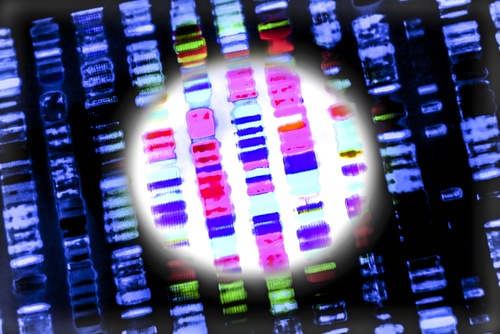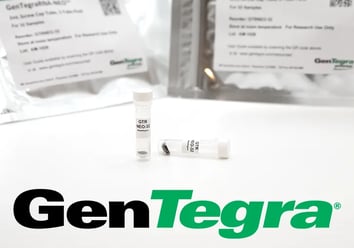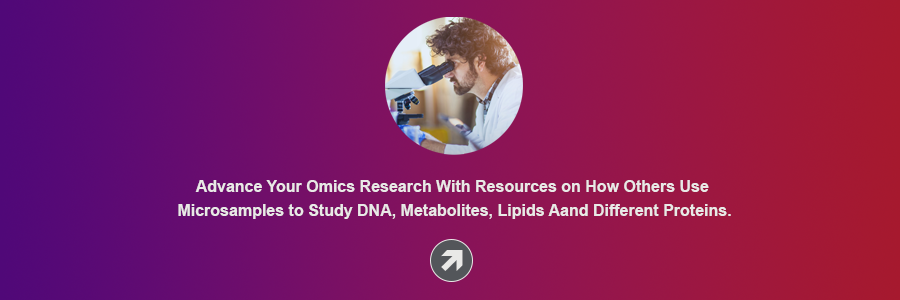Share this
a brief introduction to next generation sequencing
by Neoteryx Microsampling on Jul 25, 2017 5:25:00 AM
Next Generation Sequencing (NGS) is a modern sequencing technology also known as high throughput sequencing. It allows RNA/DNA sequencing to be carried out much more quickly than Sanger sequencing.
NGS includes Illumina, Roche 454, Ion Torrent, and Solid sequencing.

Illumina Sequencing
It’s a single stroke sequencing of vast numbers of short threads. Illumina sequencing utilizes approximately100-150bp of reads. On the other hand, you should tie longer fragments up to generic adaptors, then hardened to a slide using adaptors. Moreover, amplifying the reads using Polymerase chain reaction (PCR) individually creates a spot with numerous copies of the same read. Separation of each read into single strand is then done before sequencing.
454 Sequencing
Like Illumina, 454 sequencing uses longer reads. It does this by reading optical signals by sequencing multiple reads at once as you add their bases. Secondly, you should split RNA/DNA into 1kb of shorter reads. Furthermore, Polymerase chain reaction (PCR) amplifies the fragments using specific primers and placed in a single well of a slide. Finally, flooding of the slide with one of the four nucleoside triphosphate (NTP) is then done for sequencing.
ION Torrent/Proton Sequencing
ION Torrent/Proton sequencing doesn’t make use of optical signals like Illumina and 454 sequencing. They capitalize on the fact that the addition of dNTP to DNA polymer releases H+ ion. However, like other NGS you should split input RNA/DNA by ~200bp.
Applications of Microsampling Technology in NGS
Microsampling devices like the hemaPEN® and the Mitra® device based on VAMS® technology can allow for the production of accurate results from molecular research labs. Blood collection via remote microsampling is known for being minimally invasive, less costly than other blood collection methods, and very efficient in both clinical and remote settings.
Metabolon Validates a Method for Metabolomic Profiling in Blood Microsamples
 Recently, the Neoteryx Mitra devices from Trajan were used to validate a biological, analytical method by Metabolon on their Global Discovery Panel for metabolomics studies.
Recently, the Neoteryx Mitra devices from Trajan were used to validate a biological, analytical method by Metabolon on their Global Discovery Panel for metabolomics studies.
Analytical validation ensures that the blood microsamples maintain sensitivity, precision, and stability throughout the sample journey, from collection by the study subject to processing and analysis in the lab. Biological validation confirms that known signatures in other blood sample types will be detectable in a reproducible way.
Metabolon’s validation of Mitra with VAMS revealed reproducible results within an acceptable relative standard deviation (RSD). For the Metabolon Global Discovery Panel, 20 µL sample volume is optimal to identify the most metabolites using the smallest amount of sample. More than 90% of metabolites assessed had good precision between four technical replicates.
GenTegra Develops an RNA Stabilizer for Mitra Microsampling
 Mitra microsampling devices have also been used by GenTegra to develop their GenTegraRNA-NEO product, which is an Active Chemical Protection™ (ACP) technology for RNA preservation and stabilization in blood microsamples. Pre-treating Mitra devices with GenTegraRNA-NEO before blood collection was shown to keep the RNA stable in the samples for up to 7 days at room temperature.
Mitra microsampling devices have also been used by GenTegra to develop their GenTegraRNA-NEO product, which is an Active Chemical Protection™ (ACP) technology for RNA preservation and stabilization in blood microsamples. Pre-treating Mitra devices with GenTegraRNA-NEO before blood collection was shown to keep the RNA stable in the samples for up to 7 days at room temperature.
The 7-day sample stability enables remote RNA-based studies and field work where the samples can be shipped back to a central lab for analysis using standard mail versus expensive cold shipping.
Promega Automates RNA Purification from Blood on Mitra Devices Treated with the GenTegraRNA-NEO Stabilizer
 Promega researchers published an application note, which demonstrated a method for purifying Total RNA, including miRNA, from whole blood collected on Mitra microsampling devices that had been treated with the GenTegraRNA-NEO solution.
Promega researchers published an application note, which demonstrated a method for purifying Total RNA, including miRNA, from whole blood collected on Mitra microsampling devices that had been treated with the GenTegraRNA-NEO solution.
The researchers processed the samples using their Promega Maxwell® RSC simplyRNA Blood Kit and Maxwell® RSC Instrument.
Cellecta Detects Up- & Down-Regulated Genes in Blood Microsamples Collected on Pre-Treated Mitra Devices
 Using Mitra devices that were pre-treated with the GenTegraRNA-NEO product before blood collection, Cellecta researchers analyzed the blood microsamples using the DriverMap™ Targeted RNA-Seq Expression Profiling Technology 19K Panel and the DriverMap™ T/B Immune Markers Panel to effectively detect up- and down-regulated Genes in blood microsamples.
Using Mitra devices that were pre-treated with the GenTegraRNA-NEO product before blood collection, Cellecta researchers analyzed the blood microsamples using the DriverMap™ Targeted RNA-Seq Expression Profiling Technology 19K Panel and the DriverMap™ T/B Immune Markers Panel to effectively detect up- and down-regulated Genes in blood microsamples.
Cellecta published a research and development poster explaining how they found that analysis of 30 μL of blood using Mitra microsampling devices provided overall satisfactory performance and produced transcriptome profiles comparable to those from larger volumes of blood in Tempus tubes.
These recent developments show that blood microsampling is amenable to RNA/DNA isolation and purification using advanced instruments and central lab kits. The remote blood collection using Mitra devices with a simple finger-stick is convenient to both study participants and field researchers. Finally, the samples are compatible with Next Generation Sequencing platforms.
The main advantages of NGS over traditional Sanger sequencing include speed, cost, accuracy, and the sample size. In addition, NGS requires less RNA/DNA than Sanger sequencing.
To learn more about applying blood microsampling to Omics Research visit out resources page.
April 2024: Article updated to include new advancements in RNA research, method development and validation.

Share this
- Microsampling (206)
- Research, Remote Research (119)
- Venipuncture Alternative (105)
- Clinical Trials, Clinical Research (83)
- Mitra® Device (73)
- Therapeutic Drug Monitoring, TDM (51)
- Dried Blood Spot, DBS (39)
- Biomonitoring, Health, Wellness (30)
- Infectious Disease, Vaccines, COVID-19 (24)
- Blood Microsampling, Serology (23)
- Omics, Multi-Omics (21)
- Decentralized Clinical Trial (DCT) (20)
- Specimen Collection (18)
- Toxicology, Doping, Drug/Alcohol Monitoring, PEth (17)
- Skin Microsampling, Microbiopsy (14)
- hemaPEN® Device (13)
- Preclinical Research, Animal Studies (12)
- Pharmaceuticals, Drug Development (9)
- Harpera Device (7)
- Industry News, Microsampling News (5)
- Antibodies, MAbs (3)
- Company Press Release, Product Press Release (3)
- Environmental Toxins, Exposures (1)
- July 2025 (1)
- May 2025 (1)
- April 2025 (2)
- December 2024 (2)
- November 2024 (1)
- October 2024 (3)
- September 2024 (1)
- June 2024 (1)
- May 2024 (1)
- April 2024 (4)
- March 2024 (1)
- February 2024 (2)
- January 2024 (4)
- December 2023 (3)
- November 2023 (3)
- October 2023 (3)
- September 2023 (3)
- July 2023 (3)
- June 2023 (2)
- April 2023 (2)
- March 2023 (2)
- February 2023 (2)
- January 2023 (3)
- December 2022 (2)
- November 2022 (3)
- October 2022 (4)
- September 2022 (3)
- August 2022 (5)
- July 2022 (2)
- June 2022 (2)
- May 2022 (4)
- April 2022 (3)
- March 2022 (3)
- February 2022 (4)
- January 2022 (5)
- December 2021 (3)
- November 2021 (5)
- October 2021 (3)
- September 2021 (3)
- August 2021 (4)
- July 2021 (4)
- June 2021 (4)
- May 2021 (4)
- April 2021 (3)
- March 2021 (5)
- February 2021 (4)
- January 2021 (4)
- December 2020 (3)
- November 2020 (5)
- October 2020 (4)
- September 2020 (3)
- August 2020 (3)
- July 2020 (6)
- June 2020 (4)
- May 2020 (4)
- April 2020 (3)
- March 2020 (6)
- February 2020 (3)
- January 2020 (4)
- December 2019 (5)
- November 2019 (4)
- October 2019 (2)
- September 2019 (4)
- August 2019 (4)
- July 2019 (3)
- June 2019 (7)
- May 2019 (6)
- April 2019 (5)
- March 2019 (6)
- February 2019 (5)
- January 2019 (8)
- December 2018 (3)
- November 2018 (4)
- October 2018 (7)
- September 2018 (6)
- August 2018 (5)
- July 2018 (8)
- June 2018 (6)
- May 2018 (5)
- April 2018 (6)
- March 2018 (4)
- February 2018 (6)
- January 2018 (4)
- December 2017 (2)
- November 2017 (3)
- October 2017 (2)
- September 2017 (4)
- August 2017 (2)
- July 2017 (4)
- June 2017 (5)
- May 2017 (6)
- April 2017 (6)
- March 2017 (5)
- February 2017 (4)
- January 2017 (1)
- July 2016 (3)
- May 2016 (1)
- April 2016 (2)


No Comments Yet
Let us know what you think